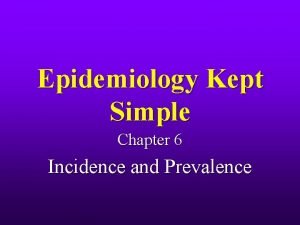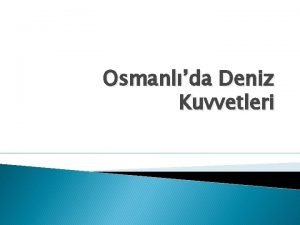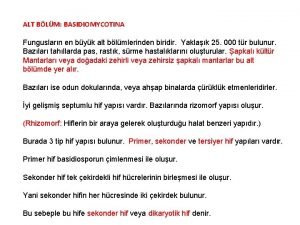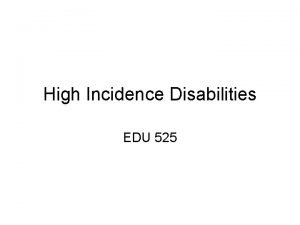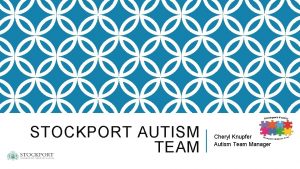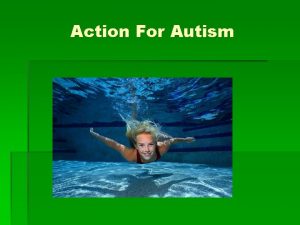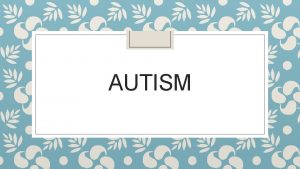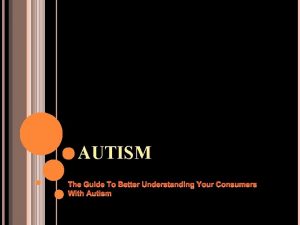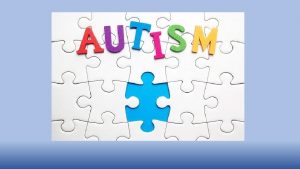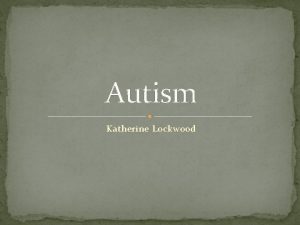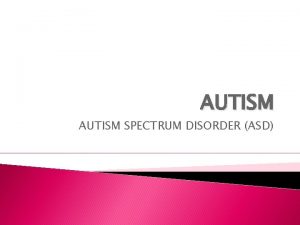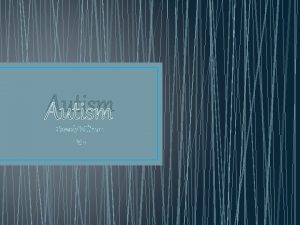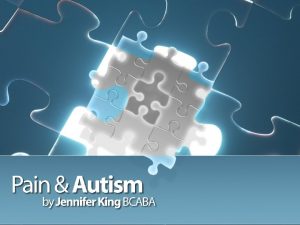HINT Autism Training High Incidence Needs Team Gateshead



















- Slides: 19

HINT Autism Training High Incidence Needs Team Gateshead “If you’ve met one person with autism, you’ve met one person with autism. ” Stephen Shore Written and compiled by Elaine Brownless & Ali Windows 2019 Jan

Why have I been given reading? Autism is a huge subject and it means different things to different people. The Autism Spectrum is incredibly diverse. While many of you have probably experienced teaching a child with autism at some point in your career, every autistic child you encounter experiences autism in their own unique way. This pre-reading pack contains general information about autism and the rationale behind the teaching strategies we will explain during training. By having this information, you are better placed to understand why the strategies work and how you can tailor them to suit individual pupils. Do make a note of any questions you have and bring them with you.

What is Autism? Ø Autism is a lifelong developmental condition affecting how the brain processes information. Ø The cause or origin of autism is unknown although it is thought to have a genetic basis. Ø A child on the Autism Spectrum will become an adult of the Autism Spectrum. Ø It affects how a person relates to others and communicates with those around them. Ø It causes people to make sense of the world differently. Ø Autism may be viewed as a hidden disability but it also brings strengths. There are many individuals that are proud to be autistic. Ø The Autism Spectrum is incredibly diverse. It affects all abilities, all nationalities, all social and cultural groups, all religions.

Diagnosis All pupils diagnosed with an Autism Spectrum Disorder display behaviours reflecting two main areas of difficulty: ‘Persistent deficits in social communication and social interaction’ – including body language and verbal communication, reciprocal conversation, emotional and social reciprocity and managing unstructured parts of the day ‘Restricted, repetitive patterns in behaviour, interests or activities’ – including difficulty with hyper- and hypo-sensitivity to sensory input; insistence on routines, repetitive behaviours and rituals

Difficulties associated with autism Ø Difficulty with communication; verbal and non-verbal Ø Difficulties with social interaction including forming and maintaining friendships and emotional reciprocity, understanding others’ viewpoints Ø Poor emotional regulation; emotional immaturity which is inconsistent with other abilities. Children with autism may have meltdowns and outbursts of emotions Ø Individuals may be distressed as a consequence of changes in routine, resistance to change Ø Sensory difficulties might be experienced Ø Children may present resistance to follow anything other than their own agenda; they can lack motivation (which can be as a result of their lack of social motivation to please others) Ø Pupils can experience high levels of stress

Stress and Anxiety Ø Elevated levels of stress and anxiety feature commonly in autism which can go on to develop into specific comorbid mental health conditions. Anxiety can be the result of many things including: social contact, school, change and/or sensory experiences but there may also be a biological component to this that we still don’t fully understand. Ø Anxiety and stress can be communicated in different ways. Some students withdraw, some have outbursts, short-fuses, self-harm, display aggression etc. Ø Many students hold back at school and vent their feelings at home. It is important to listen to parents’ experiences of home life to establish whether this is happening.

Sensory Differences Research suggests around 75% of individuals with autism may have additional sensory differences or difficulties. Sensory differences can hugely affect behaviour and a person’s state of well-being, individuals with autism tend to have greater difficulty filtering sensory information and are therefore more susceptible to overload. Differences can affect sight, touch, taste, smell, hearing, vestibular (balance) or proprioception (sense of your own body position in space). We often describe an individuals sensory experience in, possibly oversimplified, terms of either hypersensitivity or hyposensitivity. Ø Hypersensitivity Heightened sensitivity, for example to sounds, lights, tastes, smells and textures which can result in high levels of stress and anxiety when an individual is overloaded. Ø Hyposensitivity Low sensitivity, for example, to touch which may result in a very high pain threshold or particular enjoyment of bright lights, loud noises, strong tastes, smells and textures.

Psychological Theories While we cannot yet isolate specific gene combinations or specific physiological differences in the brain, there a number of psychological theories that have been developed to try and explain WHY autistic people experience the world differently. No singular theory in isolation captures the diversity of the Autism Spectrum, however theories combined provide helpful insight which underpins the rationale behind many teaching strategies known to effectively support children and young people with autism.

Central Coherence ‘Central Coherence’ is our brains ability to simultaneously process more than one line of information, not only that, but the skill of prioritising our attention appropriately. It enables an individual to be absorbed in a task (e. g. reading) and at the same time be monitoring what is happening around them. It enables us to understand the gist of a situation, see the ‘bigger picture’ and enables us to filter out unnecessary details. Dr Leo Kanner (1944) described it as, “The ability to experience wholes without attention to constituent parts. ”

Central Coherence Deficit Theory For many people with autism, flexible, multi-channel deployment of attention appears to be problematic, their attention may be described as being more tightly focussed. The implications for autistic individuals can be: Ø Problems drawing together information from different sources in order to make sense of it Ø Difficulties seeing the connection between different pieces of information and identifying and prioritising what’s important Ø An idiosyncratic focus of attention Ø Difficulty shifting attention from one activity to another, increased effort required to focus and then disengage focus Ø Having difficulties understanding the gist of a conversation Ø Difficulties making choices Ø Confusion in busy, overstimulating environments Ø ‘Difficulties generalising’, that is, problems transferring skills & knowledge from one context to another and difficulties seeing connections

Executive Functioning Deficit Theory Executive functioning describes our ability to organise and sequence information mentally. This includes the ability to grasp a sense or feel of time, saying something will happen in five minutes feels different to saying it will happen next month. It also involves being able to think ahead whilst also engaging with the here and now. Executive function helps us to prioritise and regulate impulsive behaviour. Many people with autism experience difficulties with Executive Function. The implications for individuals can be: Ø Difficulty understanding time Ø Difficulty organising information, tasks and events into a sequence mentally. Ø Difficulties with multi-tasking Ø Confusion and anxiety…Fear about starting tasks, What’s expected of me? When will this finish? What am I doing next? What am I doing after that? Ø Worry about future events Ø Dislikes waiting, may insist on being first, feelings of stress build up during transition times

Rigid Thinking Rigidity of thought or inflexible thinking is a core aspect of an Autism diagnosis. Individuals focus of attention can get so tightly focussed on one activity, belief or action that they find it tremendously difficult to move on to something new or different. Implications associated with rigid thinking include: Ø Difficulty shifting attention between tasks Ø Difficulty changing their view of a situation or accepting another person’s perspective Ø Difficulty making choices Ø Confusion and difficulty solving problems and adapting when things don’t happen as expected Ø Anxiety and fear about trying new things Ø Fixation with familiar limited interests Ø Fixation with routines Ø Difficulty ‘moving on’, tendency to ruminate

Flexible Thinking Typically when people think about experiences or feelings they are able to rate them on a sliding scale. They have language labels and the skills to distinguish and identify between ‘ok’, ‘happy’, ‘excited’ and ‘ecstatic’. They think about experiences in a flexible way. Typically, we can distinguish between an experience that is a bit annoying with one that is tragic and react proportionately.

Binary Thinking Many children with autism find flexible thinking very difficult, shades of grey are confusing so they tend to adopt a binary, black and white way of thinking. Things are either OK or not OK, terrible or wonderful with little graduation in-between. Implications Ø Something that would be trivial to most students may ruin their whole day Ø A child may find it difficult to evaluate situations and interpret outcomes in a way that another child might Ø They may have a low tolerance of things being imperfect Ø Individuals can find it difficult to label and describe their own emotions and to express these accordingly

Theory of Mind Ø ‘Theory of Mind’ was a term coined by Premack and Woodruff (1978) to describe ways in which we understand interpret our social world. Ø Theory of Mind is ‘…the ability to infer other people’s mental states and the ability to use this information to interpret what they say, make sense of their behaviour and predict what they might do next’ i. e. ‘mind-reading’. Ø Professor Simon Baron Cohen refers to the lack of a Theory of Mind as ‘mind blindness’. Ø Autistic children, across all ability ranges, show difficulties with Theory of Mind to differing degrees.

Theory of Mind in typically developing children: 18 – 30 months ØChildren refer to a range of mental states, emotions, desires, beliefs, thoughts, dreams, pretence and so on. 3 -4 years ØChildren have a well developed Theory of Mind ØThey are capable of ‘mind-reading’ to make sense of other’s behaviour ØChildren are aware of false beliefs (they can imagine what someone else might be thinking), they read emotions, understand pretence, ‘white lies’ etc

Theory of Mind enables individuals to understand this… Yes dear, this tea tastes lovely! Because of ‘theory of mind’ individuals are able to read people and understand the complexities of many social situations, they know intuitively how to behave and what the social expectations are. They can interpret facial expressions and body language and understand when there is a mismatch between what people say and what they communicate in other ways.

Theory of Mind Autistic children’s ‘Theory of Mind’ can be impaired and result in the following difficulties: Ø Accepting that their thoughts and views may be different to others Ø Recognising the feelings of others’ Ø Predicting others’ behaviour Ø Understanding that their behaviour affects how others think or feel Ø Considering what others know or can be expected to know Ø Sharing of attention leading to idiosyncratic references Ø Reading and reacting to the listener’s level of interest in what is being said Ø Understanding and recognising deception and pretence

Video clips There are hundreds of videos on the internet covering a range of autism topics and perspectives. Here are some we like that can be found on You. Tube; Dean Beadle "Being Dean: Aspergers, every day life and me" Speech Excerpt https: //www. youtube. com/watch? v=LC 0 Jyt. Wa. QZM How autism freed me to be myself | Rosie King https: //www. youtube. com/watch? v=j. Q 95 xl. Ze. Ho 8 A Different Brilliant https: //www. youtube. com/watch? v=9 BFUHww. OYTI
 Hint team
Hint team Hint team gateshead
Hint team gateshead Attack rate epidemiology formula
Attack rate epidemiology formula Incidence vs incidence rate
Incidence vs incidence rate Cstd gateshead
Cstd gateshead Std clinic gateshead
Std clinic gateshead Gateshead jsna
Gateshead jsna Eslington house
Eslington house Std clinic gateshead
Std clinic gateshead Autism idea
Autism idea High functioning autism
High functioning autism Pcm chess
Pcm chess Primary needs and secondary needs
Primary needs and secondary needs Satisfaction
Satisfaction Primary needs and secondary needs
Primary needs and secondary needs Strategic gender needs and practical gender needs
Strategic gender needs and practical gender needs What is need analysis in esp
What is need analysis in esp Hint deniz seferleri kısaca
Hint deniz seferleri kısaca Hint fiction
Hint fiction Puccinia graminis
Puccinia graminis



